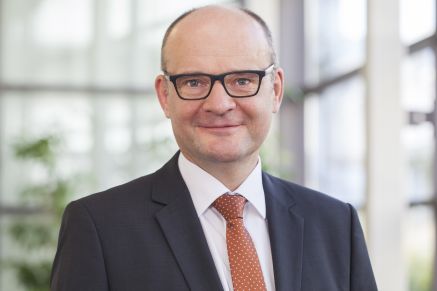


What do you teach students in your lecture »Quantum Effect Devices and Semiconductor Technology«?
In my lecture, I introduce students to the physical principles of optical and electronic semiconductor devices that specifically exploit quantum effects.
»We talk about devices in which the movement of charge carriers is restricted in one or more dimensions. Examples are quantum cascade lasers or high-electron mobility transistors.«
Quantum mechanical effects in very thin semiconductor heterostructures are specifically used to achieve the desired device properties. The solid state and semiconductor physics behind it, the functionality of the devices as well as the manufacturing technology are the core topics of my lecture at the Institute of Photonics and Quantum Electronics at the Karlsruhe Institute of Technology.
What do you enjoy about teaching?
»It's simply fun to teach young, highly motivated students from very different fields such as electrical engineering, physics or economics about the topics of IAF. In addition, you always learn something new yourself when you intensively study the basics of your own scientific work.«
Dealing with the next generation of scientists also enriches me personally. Last but not least, it is a wonderful end to the week for me to spend the Friday afternoon at KIT. And I am particularly pleased that the lecture in Karlsruhe is also a building block for recruiting our young scientists.
Once per semester you bring your students to Fraunhofer IAF. How do the students experience their visit?
In my opinion, this is enormously important and always very well received, because the students get to know the hands-on component at IAF.
»Especially in the field of semiconductor epitaxy and process technology, they can experience manufacturing processes in the clean room for themselves. We then show them applications of the devices, for example in the laser application laboratory, or exhibits and demonstrators that we have ready for trade fairs.«
The colleagues at IAF take a lot of time to explain the processes. The excursion is always very well received and in general I think that the typical frontal teaching has had its day. The visit to IAF, the visual impression and the connection between theoretical physics and applied research will certainly be better remembered.
 Fraunhofer Institute for Applied Solid State Physics IAF
Fraunhofer Institute for Applied Solid State Physics IAF